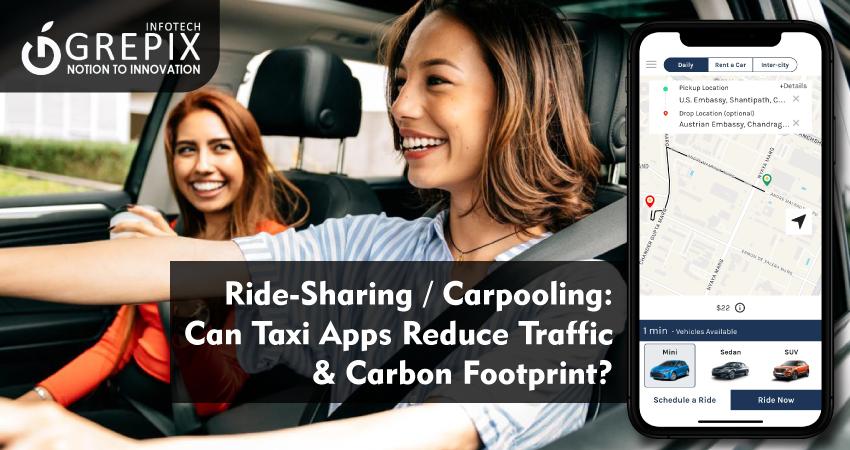Ride-Sharing / Carpooling: Can Taxi Apps Reduce Traffic & Carbon Footprint?
Urban mobility has undergone a radical transformation thanks to carpooling taxi apps and ride-sharing services. These eco-friendly ride-hailing technologies operate by matching multiple passengers headed in the same direction, minimizing empty seats and excess vehicle miles. As sustainability and urban congestion concerns climb globally, many are asking: can a carbon footprint reduction app truly make cities greener, and ease traffic jams? Let’s explore the evidence, benefits, challenges, and international success stories behind these innovative solutions.
Carpooling taxi apps and ride-sharing platforms are transforming urban transportation, promising significant reductions in traffic congestion and carbon footprints. By leveraging shared rides, integrating electric vehicles, and optimizing routes, these eco-friendly ride-hailing solutions achieve higher vehicle occupancy, decrease private car ownership, and reduce emissions per trip. Real-world examples like EcoRide and LOCA app highlight measurable impacts, including decreased city-wide emissions and a substantial shift towards green mobility. Despite facing challenges such as deadheading and slow EV adoption, the global rise of thoughtful, carbon footprint reduction apps offers a sustainable transport future. Users enjoy cost savings, improved convenience, and a greener lifestyle, making carpooling taxi apps a smart choice for those prioritizing the environment and urban mobility. Explore the statistics, benefits, and practical tips on how a ride-sharing app supports eco-friendly living and start making a difference now.
Environmental Benefits of Carpooling Taxi and Ride-Sharing Apps
Lower Carbon Emissions
- Eco-friendly ride-hailing, especially carpooling taxi apps, optimize vehicle occupancy and route efficiency, reducing per-passenger emissions by up to 40% compared to solo trips.
- Cities with robust ride-sharing app adoption saw significant declines in annual transport-related CO₂ emissions—Beijing reduced its yearly footprint by more than 46,000 tons through carpooling platforms.
- Apps integrating electric vehicles (EVs), such as LOCA in Laos and EcoRide, set new standards for green mobility, boasting up to 25% EV fleets and slashing direct tailpipe emissions.
Fewer Cars, Less Traffic
- Carpooling taxi apps convert solo rides into shared journeys, which led to decreases in city-wide vehicle fleets by tens of thousands of cars as seen in real-life case studies.
- Research found that theoretically, ride-sharing could reduce the number of active taxi vehicles on roads by up to 76%, without adding delays, while direct car ownership falls markedly.
- Efficient order matching and vehicle dispatch algorithms in ride-sharing apps further optimize resource usage and fuel consumption, reducing redundant driving and pollution.
User Benefits: Why Choose a Carbon Footprint Reduction App?
Significant Cost Savings
- Shared rides mean lower individual fares, appealing to students, commuters, and urban dwellers seeking budget-friendly mobility.
- Carpooling taxi apps often introduce incentives (rewards, discounts, carbon credits) for eco-friendly choices, motivating frequent users to make greener decisions.
Greater Convenience and Flexibility
- Eco-friendly ride-hailing apps provide 24/7 coverage, real-time tracking, route optimization, and seamless connections to public transport, delivering rapid and reliable service.
- Same-gender ride-matching and night-time safety features (as with EcoDrive) enhance peace of mind for late journeys.
Community and Networking
- Sharing a ride fosters social interaction, builds community bonds, and often encourages positive behavioral shifts toward environmental responsibility.
- Users who consistently opt for carpooling taxi apps become active participants in a collective movement to reduce urban pollution and congestion.
Challenges: Are Ride-Sharing Apps Always Eco-Friendly?
Deadheading and Traffic Patterns
- Studies show up to 50% of time spent by ride-hailing drivers is “deadheading” moving without passengers, which can actually increase overall vehicle kilometers and congestion in some cities.
- Entry of major ride-sharing apps has, at times, led to a 1% uptick in congestion intensity and a reduction in public transport usage, raising concerns about the net effect on urban sustainability.
Slow Integration of EVs
- Despite promising reductions, EV adoption by ride-sharing fleets is hampered by infrastructure gaps, range limitations, and upfront costs, especially in developing regions.
Replacement of Greener Modes
- Surveys in many metropolitan areas revealed half of ride-sharing app trips replace walking, cycling, or public transportation, which are greener than even shared car rides.
Summary of Key Challenges
- Deadheading wastes energy and time, offsetting some benefits.
- Declining public transportation ridership undermines city-wide sustainability.
- Slow electric vehicle integration limits maximum reduction of the carbon footprint.
Global Examples of Eco-Friendly Ride-Hailing
LOCA App (Laos)
- LOCA pioneered the largest EV fleet in Laos and offers a fully licensed ride-sharing service, setting a standard for eco-friendly ride-hailing in Southeast Asia.
- Supported by Asian Development Bank and USAID, LOCA’s business model focuses on sustainability, complete coverage, and first-class passenger insurance.
EcoRide (Mid-Sized City Case Study)
- EcoRide raised vehicle occupancy from 1.2 to 2.5 passengers per trip, cut emissions per trip by 40%, and shifted 15% of residences away from private ownership all within two years.
- Integration with local public transportation increased transit ridership by 20%, improving last-mile connectivity and further reducing the city’s overall carbon footprint.
Appicial, Lyft, and International Efforts
- Appicial platforms blend carpooling algorithms, optimized EV adoption, and cross-partnerships with local transit systems for cumulative emission cuts.
- Lyft mass-deployed EVs and launched carbon credits to incentivize users toward eco-friendly mobility habits.
On-Page SEO Key Section
How to Choose the Best Carpooling Taxi App for Carbon Footprint Reduction
5 Must-Have Features:
- Real-Time Carbon Tracking : See exact emissions savings after every shared trip.
- Integrated EV Fleet : Prioritize ride-matching with available electric vehicles.
- Route Optimization Algorithms : Efficiently plan multi-passenger routes to avoid traffic bottlenecks.
- Rewards and Incentive Programs : Earn discounts or credits for eco-friendly rides.
- Public Transit Integration : Facilitate smooth connections to buses, trains, and trams for broader usage.
Top Eco-Friendly Ride-Hailing Apps in 2025
- LOCA (Laos): Largest EV fleet and ride-sharing platform.
- EcoRide: Advanced carpooling and public transit features.
- Appicial: Tailored for dense urban environments, prioritizing emissions reduction.
Conclusion
Carpooling taxi apps and ride-sharing platforms offer tangible solutions to the twin crises of urban congestion and climate change. While challenges exist, especially concerning deadheading and slow EV adoption, forward-thinking platforms like LOCA, EcoRide, and Appicial are redesigning urban mobility for a greener future. These eco-friendly ride-hailing apps demonstrate real progressn higher vehicle occupancy, reduced city-wide emissions, and better connectivity all while fostering a culture of sustainability. As cities grow, and transport demand intensifies, using a carbon footprint reduction app is both a practical and responsible choice. Try a carpooling taxi app or ride-sharing app now to enjoy more savings, comfort, and sustainable travel for yourself and for the planet.
FAQs
1. What is a carpooling taxi app and how does it work?
A carpooling taxi app matches users going in the same direction, allowing them to share taxi rides, which reduces the total number of vehicles required, lowers fares, and supports carbon footprint reduction.
2. Do ride-sharing apps really decrease traffic congestion?
Yes, when widely adopted and efficiently managed, ride-sharing apps can reduce the number of active vehicles and, in turn, decrease congestion. However, results vary by city and can depend on deadheading rates and public transit integration.
3. How much can eco-friendly ride-hailing apps cut carbon emissions?
Case studies show per-trip CO₂ reductions of 40% and annual city-wide emissions drops exceeding 46,000 tons through optimized carpooling and EV fleets.
4. Is carpooling with a taxi app safe, especially at night?
Many carpooling taxi apps implement safety features like same-gender ride-matching, real-time tracking, insurance coverage, and verified drivers to increase security for all passengers.
5. What incentives do carbon footprint reduction apps offer users?
Popular incentives include fare discounts, loyalty programs, carbon credit earning for low-impact trips, and rewards for booking electric vehicle rides or sharing with others.







